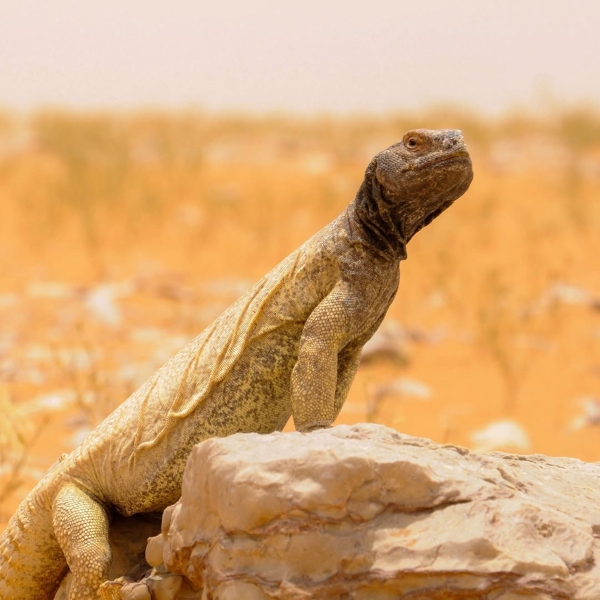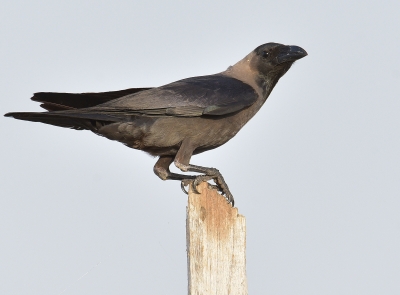


The Egyptian Spiny Tailed Lizard (Uromastyx aegyptius) is a lizard of the Lepidosauria species. It is found in steppes, gravel, and sandy areas of the Kingdom of Saudi Arabia.
Characteristics of the Egyptian spiny-tailed lizard
The Egyptian spiny-tailed lizard is the largest species of lizard found in the Arabian Peninsula and Sinai. It is referred to as the Egyptian lizard, where its taxonomic name indicates that the first specimen thereof was collected and examined in Sinai, Egypt. It is known for its large size, where its weight ranges between two and three kg. It may grow into larger sizes should it live longer. It bears a triangular head featuring strong jaws with small strong teeth. It has a wide and padded body ending with a conical tail featuring sharp serrated spines. It is believed that it uses its tail to scare enemies away. It has front and hind limbs ending with five fingers, with each finger featuring a strong claw it uses for digging burrows. It generally has a yellowish-earthy color.
Environment of the Egyptian spiny-tailed lizard
The Egyptian spiny-tailed lizard lives in steppes and gravel areas, hence its name in some areas as "Suhaili" (the one that lives in steppes). It digs deep twisted burrows that could reach more than one m underground. It is mostly active during daytime. It feeds on annual plants and shrub leaves. It is the only type of lizard that feeds on plants and does not eat insects like other reptiles. It returns upon heat's increase. It hibernates during spring and mild weather. It breeds in spring, with its eggs hatching after one month. Female lizards usually lay between thirty to forty eggs per breeding season.
The Egyptian spiny-tailed lizard: Prey for animals and humans
The Egyptian spiny-tailed lizard is prey for many animals, including birds of prey, mammals, and reptiles such as monitor lizards. At the same time, it is prey for the inhabitants of the central and northern regions of the Kingdom, where some hunt and eat it, namely in Spring. Hunting of the Egyptian spiny-tailed lizard has increased, causing its numbers to decrease in areas where it was actively present, especially in areas neighboring towns and villages.
Protection of the Egyptian spiny-tailed lizard from extinction in Saudi Arabia
Royal nature reserves assume an instrumental role in protecting the Egyptian spiny-tailed lizard from the threat of extinction, where this threat has been growing due to unregulated hunting and drought. Imam Turki bin Abdullah Royal Nature Reserve has successfully bred and reintroduced the Egyptian spiny-tailed lizard, enhanced natural habitats, and restored ecosystems. Moreover, the Special Forces for Environmental Security also contribute to the protection of the Egyptian spiny-tailed lizard by preventing its hunting and arresting violators. In fact, the Environmental Law and its Implementing Regulations prohibit the hunting of wildlife creatures, including the Egyptian spiny-tailed lizard. In this respect, the penalty for hunting the Egyptian spiny-tailed lizard is set at SAR3,000.
Related quizzes
Related articles

